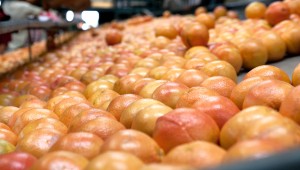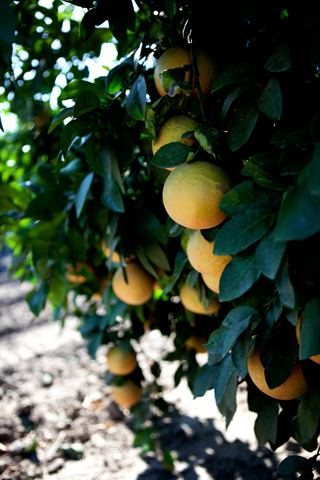
Citrus Safety & Sanitation
Citrus is actually very safe and does not pose severe safety and sanitation health risks. However, like all other produce, remind your consumers to wash the outside of the fruit with cool water before peeling to avoid any cross contamination issues that may be transferred from peel to hands to sections.
Citrus Handling & Storage
Your grapefruit and oranges will arrive in bags, cartons or bins, depending on your order. Your bulk fruit that arrives in cartons or bins has been pre-sized based on your order. When displaying citrus, do not mix different varieties as this may confuse your consumer and create a negative consumer purchase experience.
Inspection
Upon receiving your order, inspect the fruit to review quality. Throughout the storage life of the product, continually inspect the product. Remove and discard any old or rotten fruit.
Ripening

All citrus is ripened on the tree and picked, at its peak so all of the fruit you receive will be at its best. At the beginning of the season or near the end of the season, you may receive fruit that has some green on it. The color of the fruit is not an indication of ripeness. Early in the season, the outer peel may not have reached its full color and ethylene gas may be used to degreen the fruit. At the end of the season, the fruit may enter a regreening phase and cannot be degreened.
Temperature Control and Storage
It is essential that the product is stored properly to assure the greatest shelf life possible and the least amount of shrink. Texas Grapefruit should be stored at 50-60 degrees Fahrenheit with a relative humidity of 85-90%. Grapefruit is sensitive to cold temperatures. If it is held at temperatures below 50 degrees Fahrenheit and brought to room temperature when placed on the floor in the department, the fruit will begin to sweat. When the fruit is cold, the wax becomes cloudy and loses it sheen. When the fruit enters a sweat stage, the wax comes off the fruit, and it takes on a dull appearance. Citrus should never be misted.
Display Management
Adequate display management is obtained through first in, first out thought patterns. Be sure to inspect the displays frequently and keep them full. Consumers do not like shopping a picked over display. When stocking displays, rotate the fruit, placing older product on the top and front of the display and filling the bottom of the display with new fruit. Remove any fruit from the display that has a dry or dehydrated appearance.


